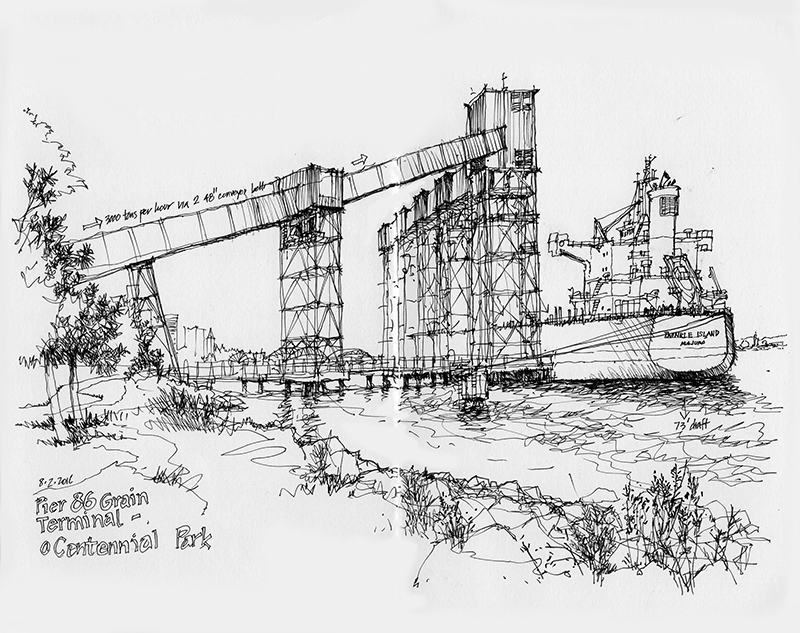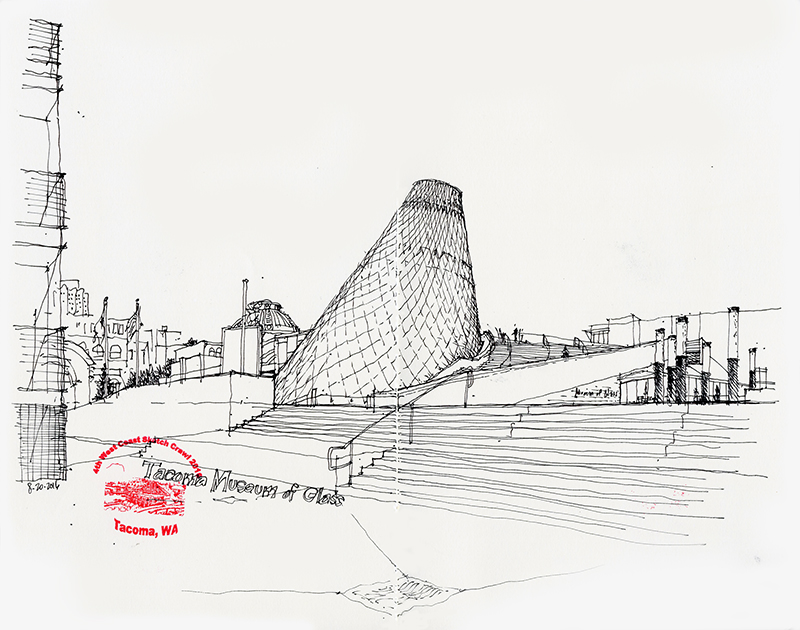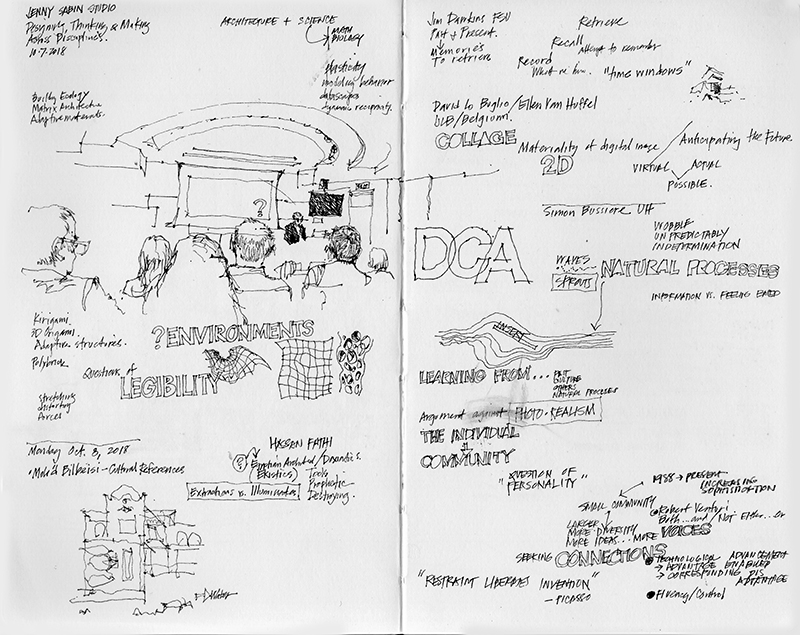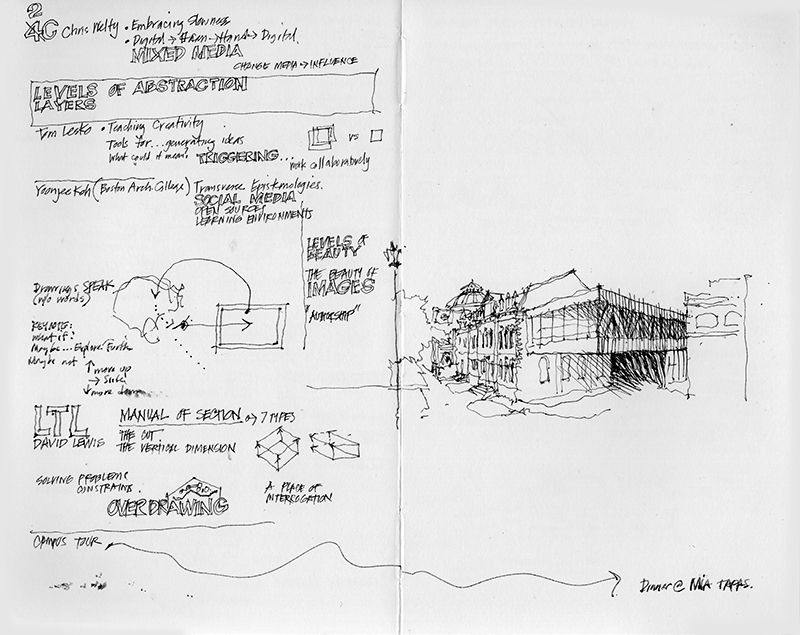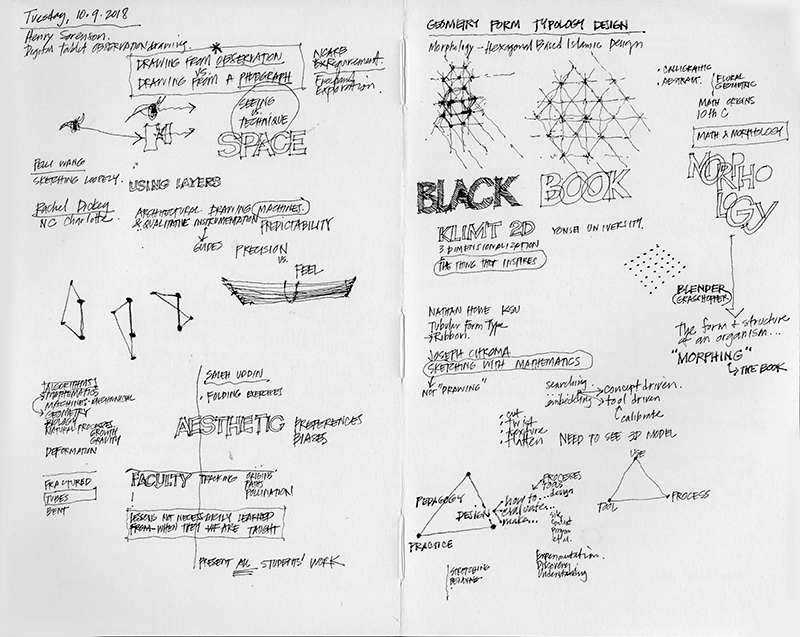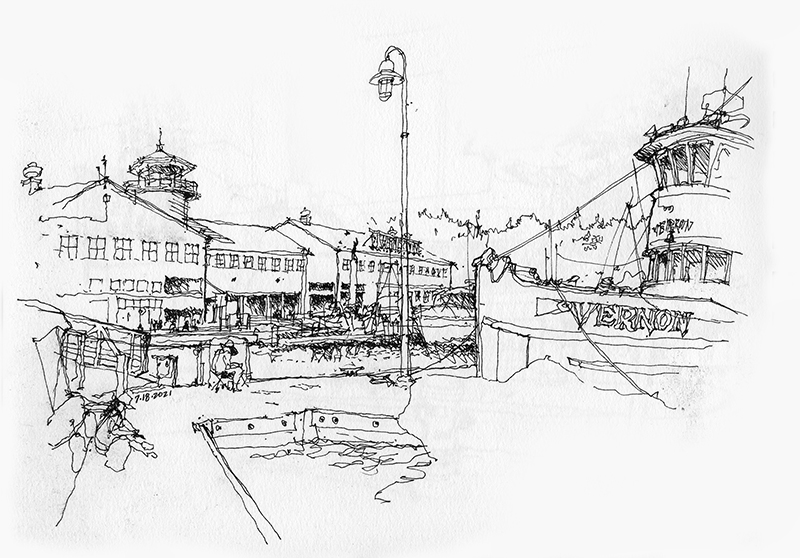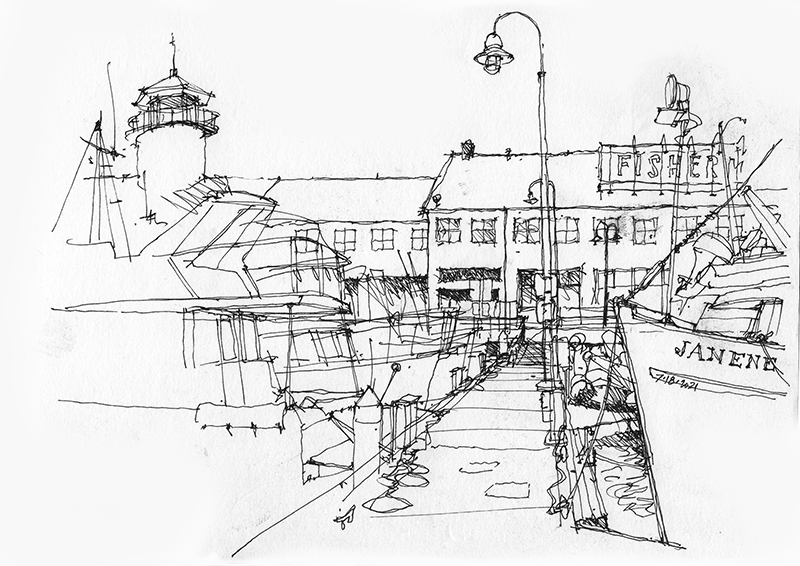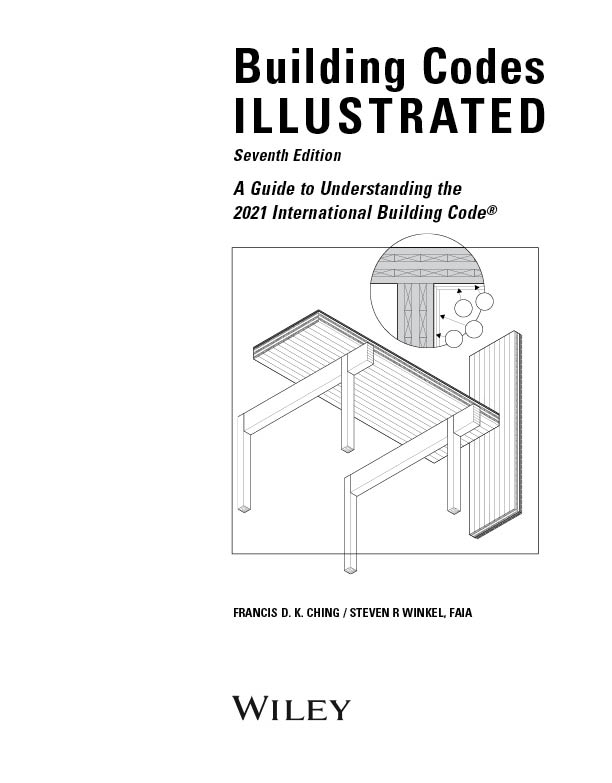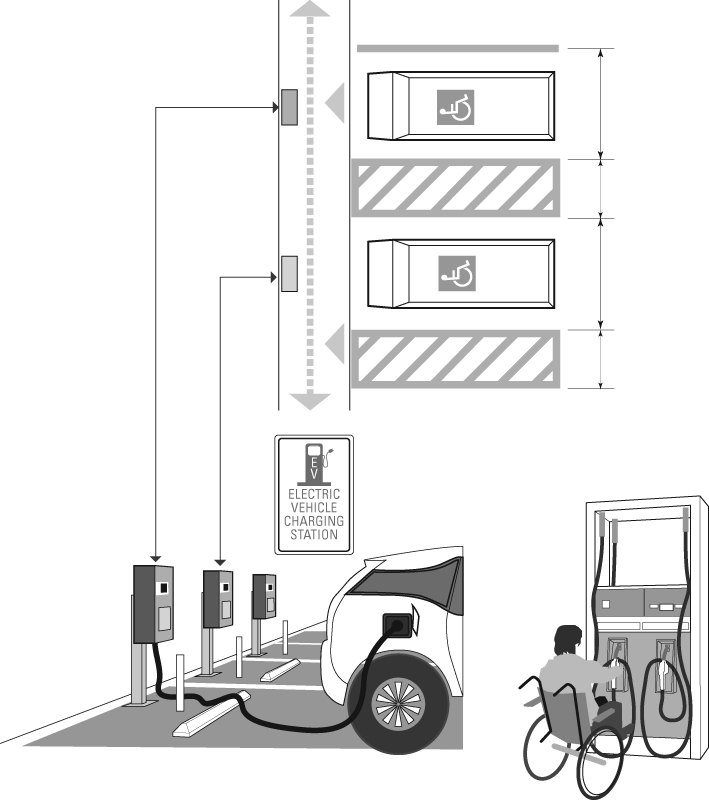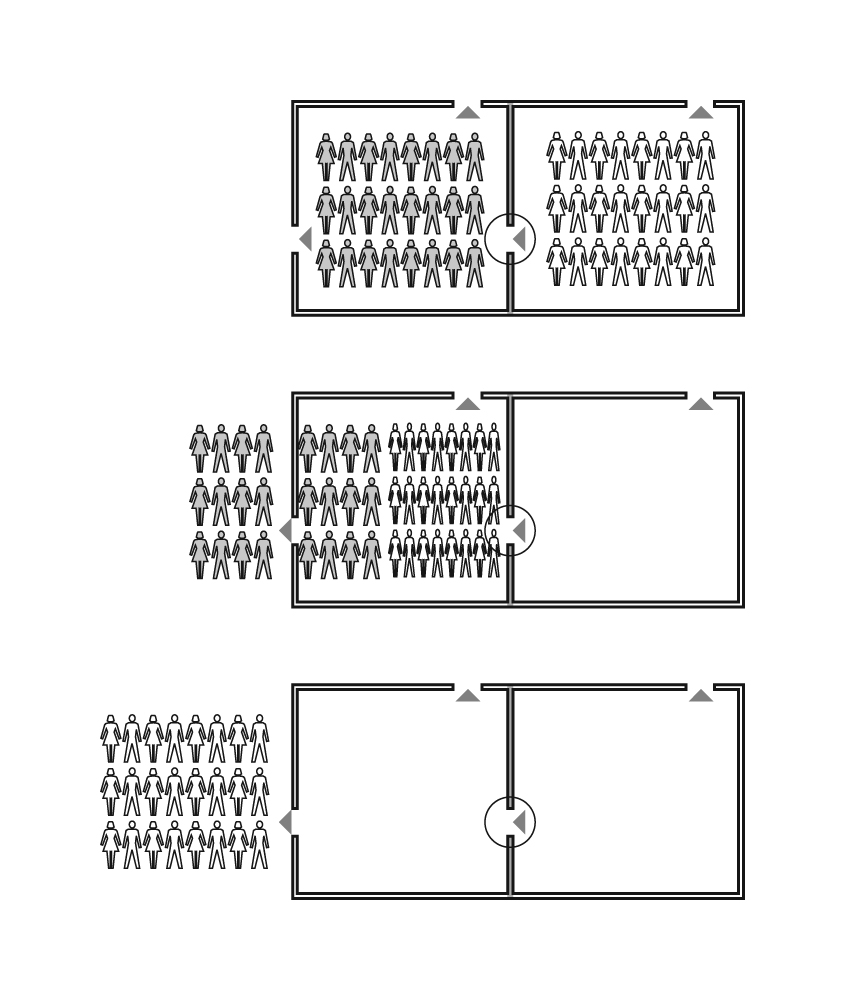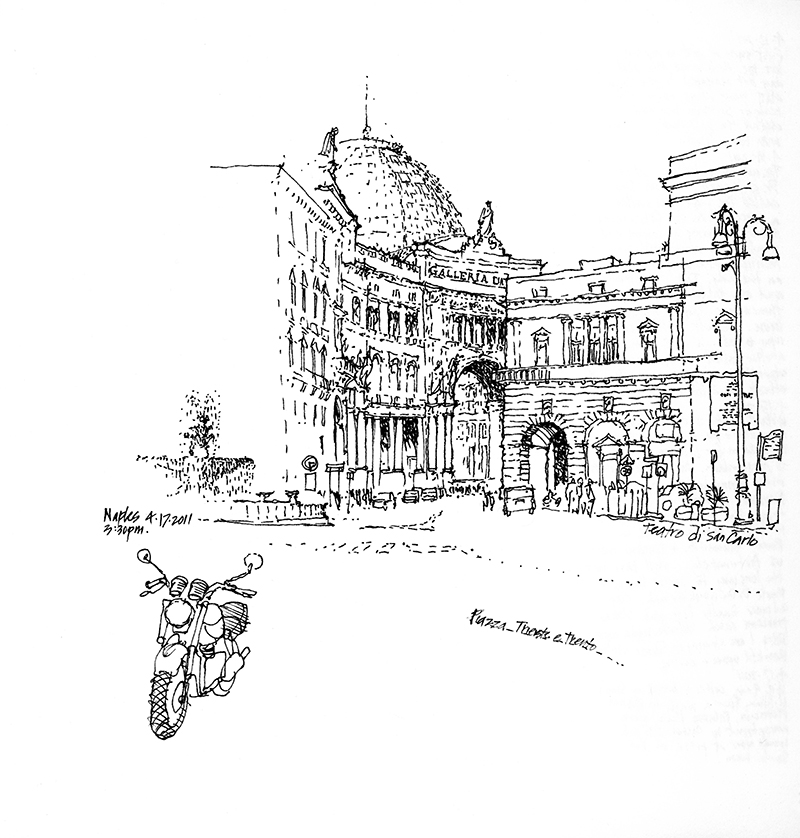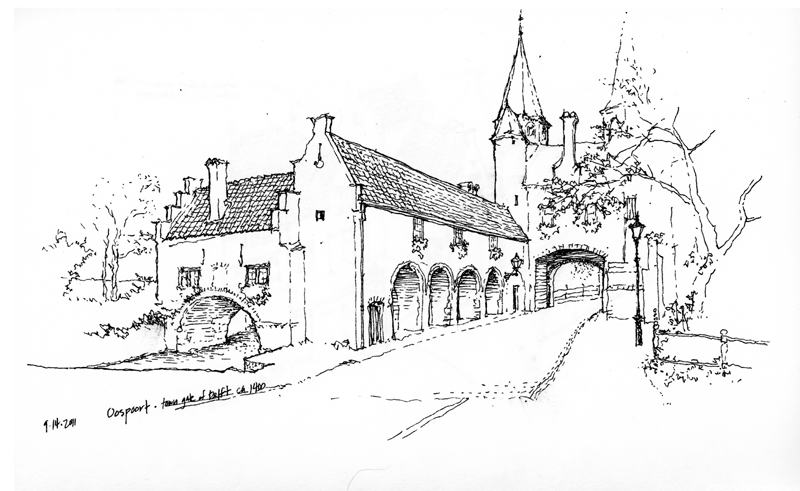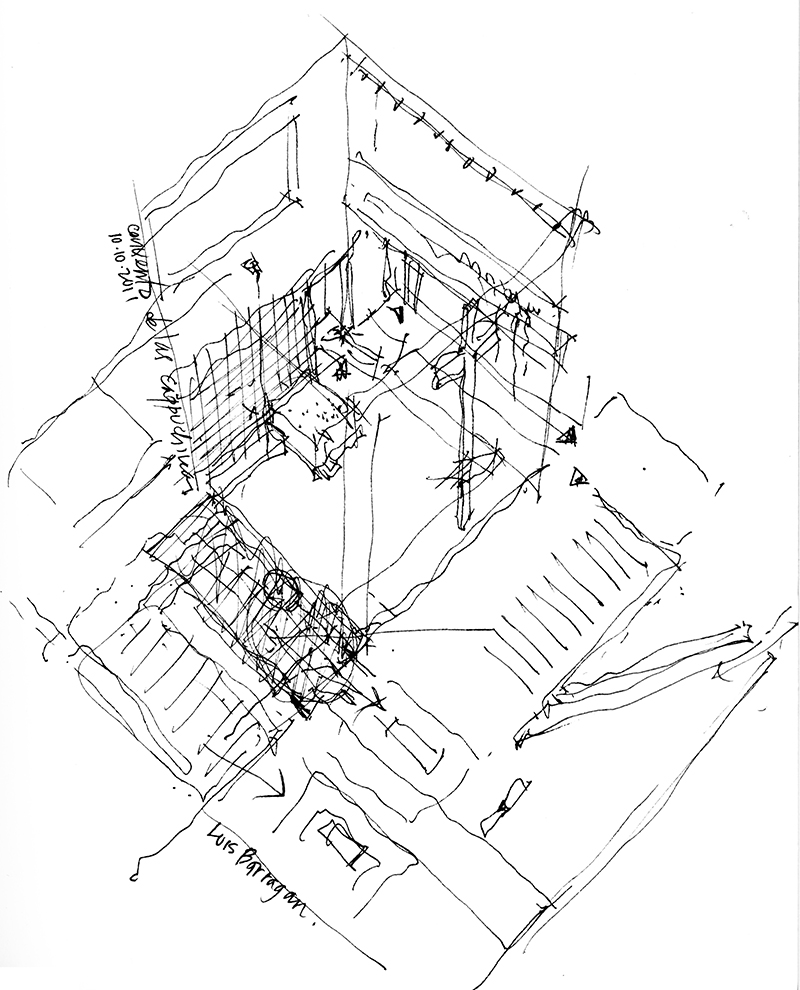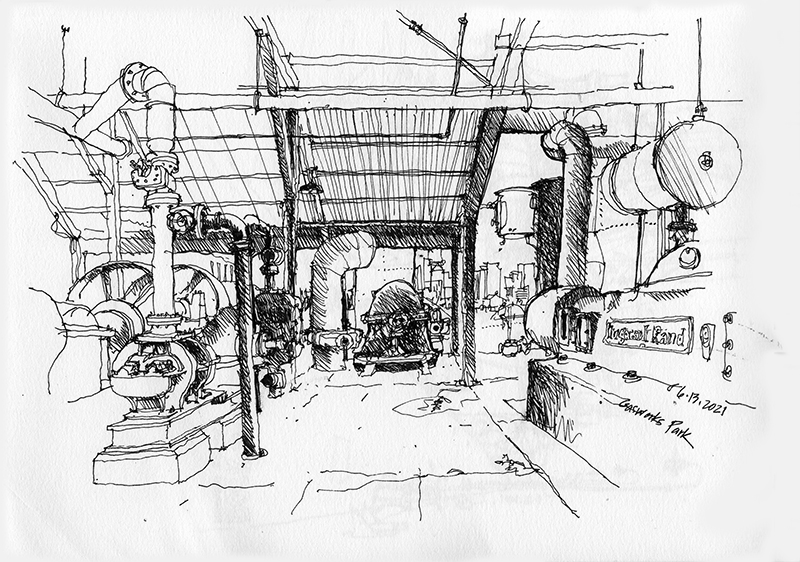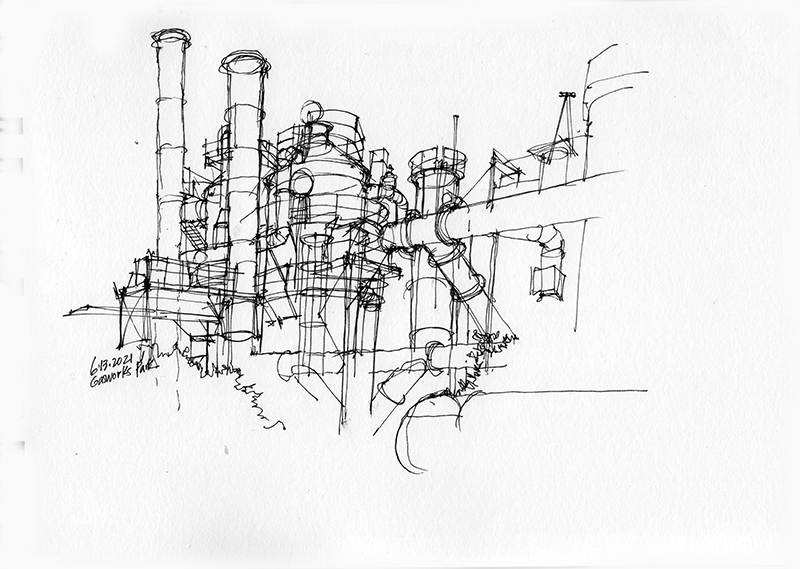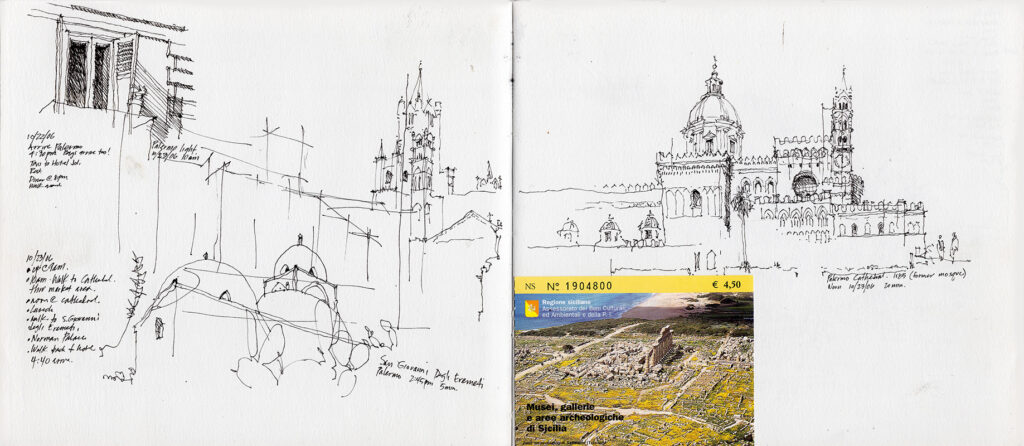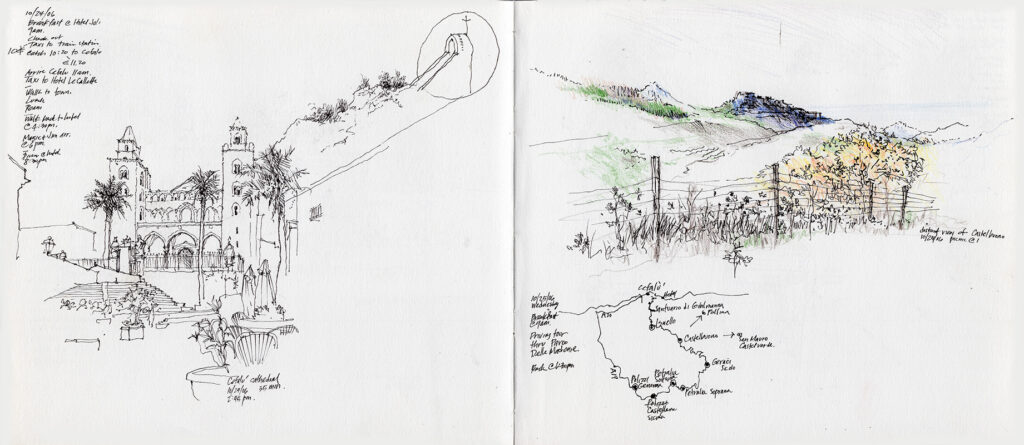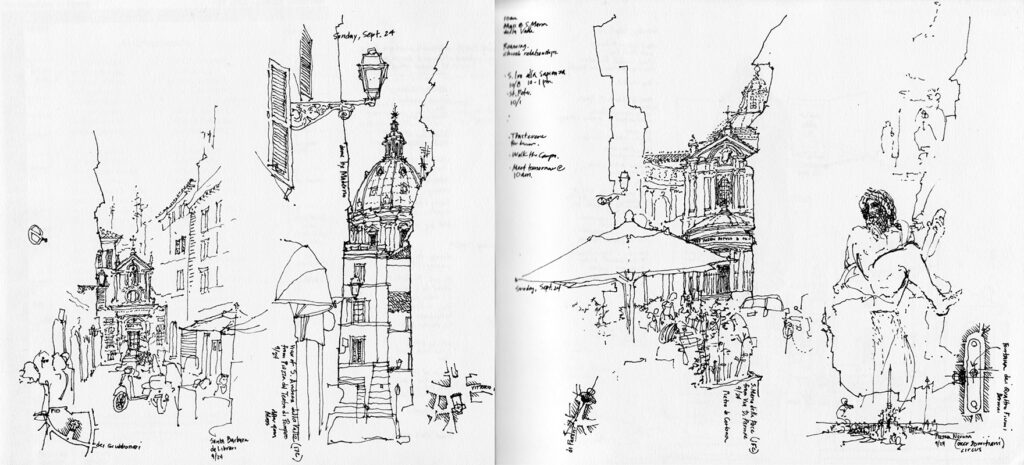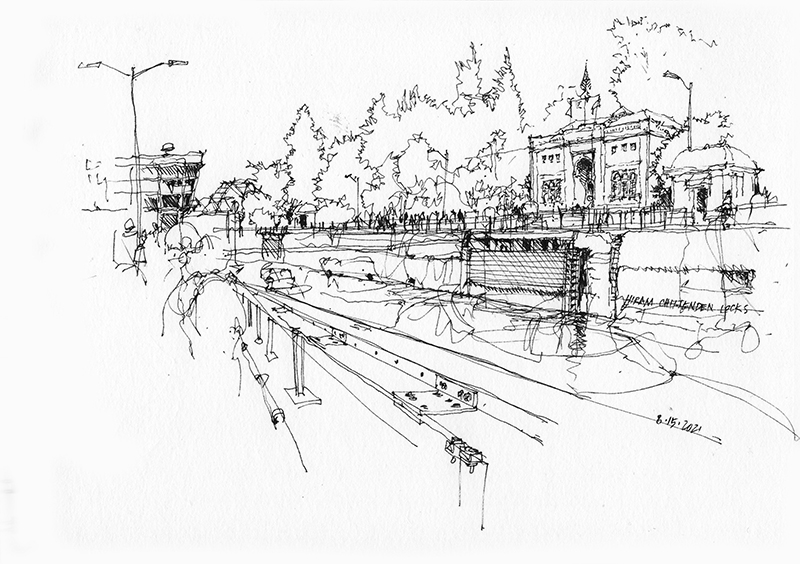
The Seattle Urban Sketchers group met this past Sunday at the Hiram M. Chittenden Locks (aka Ballard Locks), which separates the fresh waters of Lake Union and Lake Washington to the east from the tidal waters of Puget Sound to the west. We’ve met here before, in August of 2019. This time, I chose to draw the larger of the two locks, beginning when it was closed and ending with it open and accepting vessels small and large, in from the west. Because of the constant movement, it was possible to merely suggest the boat traffic.
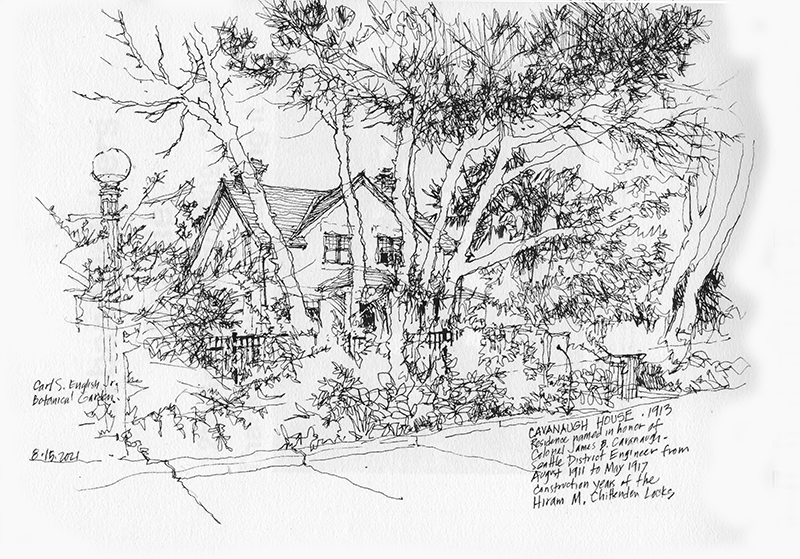
Part of the Ballard Locks complex is the Carl S. English Botanical Garden, in which is sited what is known as the Cavanaugh House, named “in honor of Colonel James B. Cavanaugh, Seattle District Engineer from August 1911 to May 1917, construction years of the Hiram M. Chittenden Locks.” The house was renovated in 1966 to become the official residence of the US Army Corps of Engineers’ Chief Engineer during their 3-year tenure in the Seattle District.

